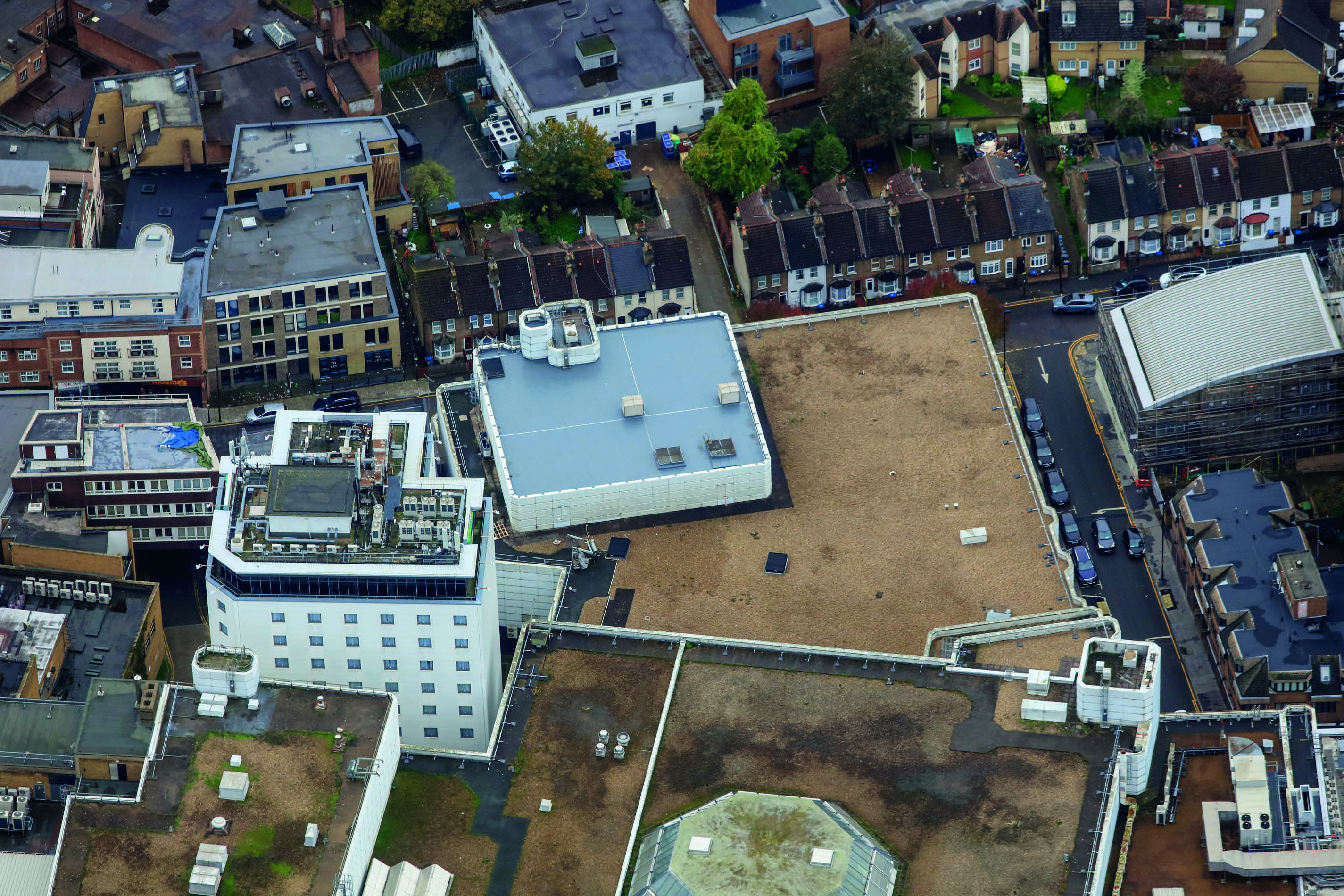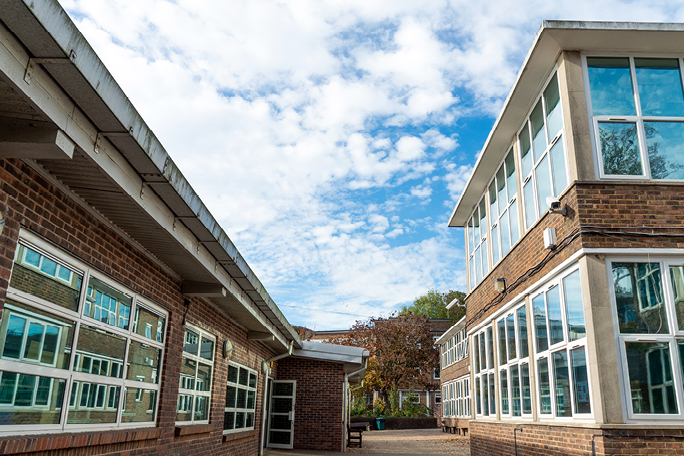Simple Steps to Flat Roof Maintenance
Flat roof maintenance involves regular inspection, cleaning, repair, and preventive measures necessary to maintain a dependable structure capable of protecting inhabitants and possessions within it. It includes addressing common issues such as leaks, ponding water, or minor surface defects before they escalate into more severe problems leading to potentially expensive repairs or even replacement.
Some key aspects of flat roof maintenance include:
- Keeping debris off the surface: Remove excessive dirt, leaves, branches, and other foreign materials that accumulate on the roof which may cause damage or clog drainage systems.
- Ensuring proper drainage: Check gutters and downpipes regularly for blockages so that water can flow freely off the roof surface.
- Inspect for leaks and get them fixed promptly: Detect signs of possible leakage early on before they turn into major issues that could jeopardise the entire roofing structure.
- Regularly trim tree branches hanging over your flat roofing system —they can cause damage through physical contact, falling debris and accelerated organic growths.
By incorporating these straightforward methods into a systematic approach towards flat roof maintenance throughout its lifespan, you’ll be saving valuable resources while extending the longevity of your investment – allowing it to serve you efficiently for years to come.
Common Issues with Flat Roofs
Flat roofs are popular for their functionality. They can be the location for building planting, alongside being cost-effective and accessible. However, proper flat roof maintenance is essential to prevent issues that can lead to costly repairs. Three common problems generally arise with flat roofs: leaks, ponding, and blistering.
Leaks
Leaks are arguably the most common and serious issue associated with flat roofs. Even a small leak can result in significant damage to your property’s interior, structural integrity and insulation becoming saturated rendering it inefficient therefore resulting in its overall value depleting. Factors such as poor workmanship during installation, inadequate waterproofing materials or seams on the membrane lifespan of the roof, make it susceptible to leaks over time.
To reduce the risk of leaks:
- Schedule regular flat roof inspections to identify any vulnerabilities
- Ensure proper installation by hiring a manufacturer approved experienced roofing professional
If you suspect a leak, address it promptly to avoid further complications.
Ponding
Ponding water refers to pools of standing water that remain on a flat roof after precipitation has ceased. It typically occurs due to improper drainage systems or insufficient slopes preventing water from draining off the surface effectively. Ponding contributes to several negative consequences such as:
- Encouragement of algae growth which can deteriorate roofing materials
- Accelerating deterioration of membranes causing cracks and leaks
- Heightening vulnerability during winter from accumulated ice weight
- Potential leaks will increase that chance of severe internal damage
- Excess load applied to the supporting structure
To mitigate ponding issues, ensure these preventive steps are taken:
- Regularly check drainage systems for obstructions or debris build-up
- Confirm your flat roof has sufficient slope to provide efficient drainage
Address ponding before it escalates into costly repair or replacement requirements.
Blistering
Blistering can be another common problem encountered by flat roof membranes, especially those that consist of multiple layers such as modified bitumen or built-up roofing (BUR). This defect appears as raised bubbles on the roofing membrane surface resulting from trapped interlayer moisture that can be caused by poorly sealed laps, physical damage or aged related degradation; extreme heat exposure or long-term freeze thaw cycles can amplify this problem further.
Blistering can negatively affect a flat roof’s performance and lifespan by:
- Weakening the bond between layers or materials
- Compromising waterproofing capabilities, potentially leading to leaks
- Creating health and safety issues with slips, trips and falls
To prevent blistering:
- Employ high-quality roofing materials throughout installation processes
- Undertake regular visual inspections of the roofing membrane surface to identify any potential blister inducing defects
Tackle any prevailing signs of blistering as part of your flat roof maintenance routine, reinforcing your roofing structure against impending damage.
How to Maintain a Flat Roof
To extend the lifespan and ensure the optimal functionality of your flat roof, it is necessary to perform regular maintenance. In this section, we will discuss crucial steps you can take to maintain your flat roof efficiently.
Keep Debris Off the Roof
The first step in effective flat roof maintenance is keeping debris off your roofing surface. Accumulation of leaves, branches, dirt, and other materials could become problematic for several reasons:
- It may cause water ponding by blocking drains
- Organic debris such as leaves may rot over time, causing unpleasant smells and unwanted plant growth
- Larger objects like branches could potentially damage the membrane or lead to punctures and leaks
Regularly inspect your roof and clean up any accumulated debris using a soft broom (that will not puncture the membrane) or specialised equipment designed for flat roof cleaning. This simple action contributes significantly to maintaining a healthy roofing system.
Check the Drainage Regularly
Proper drainage plays an essential role in efficient flat roof performance. Ensure that the gutters, downpipes, and internal drains are clear from blockages caused by debris or growth of plants. Neglecting drainage systems can result in ponding water issues, downpipes backing up and even internal pipework ruptures that will lead to water damage internally.
It is recommended to check drainage components every couple of months or during scheduled flat roof inspections as part of planned preventative maintenance.
Inspect for Leaks and Fix Promptly
Leaks can be one of the most common problems associated with flat roofs. To avoid significant issues such as structural damage, costly repairs to internal finishes, mold growth, or energy inefficiencies – promptly address any identified leaks.
During routine flat roof inspections:
- Examine areas prone to leakage – typically around lap joints between roofing materials.
- Look for stain marks or discoloration indicating moisture infiltration.
- Identify minor blisters or water egress when the membrane surface is trafficked.
- Ensure the roof surface does not feel unusually soft under foot in localised areas.
- Pay attention to interior walls and ceilings for visual signs of water seepage.
If you identify a leak or suspect one is present, seek the assistance of a professional to perform a thorough inspection and initiate necessary repairs.
Keep Unnecessary Weight off the Roof
Excess weight on your flat roof can cause unnecessary stress on its structure, leading to weakened components and potential damage. Items like excess snow accumulation during winter months, ponding water, or even retrospectively added roof top items, such as new plant equipment orm can create added load on your supporting structure.
Should excess load be a concern, examine the area for visible deflection to prevent undesired impacts caused by excessive weight. Removing extreme snow build-up in colder climates is recommended for relieving stress – for safety reasons consider hiring professionals with experience handling such tasks.
Remove Trees/Overhang Promptly
Proximity to trees or other overhanging foliage presents a risk factor for your flat roof’s health. Overgrown tree branches could scrape or fall against the waterproofing surface causing physical damage, whereas dropped leaves could lead to ponding water issues if left unaddressed. Furthermore, tree sap is known to cause degradation to some flat roof roofing materials if allowed to accumulate without cleaning.
Plan ahead by pruning overhanging branches as part of regular maintenance duties. If vegetation is too close, consider removing it entirely or consulting with a tree surgeon to find optimal solutions suitable both for your property as well as preserving greenery when possible.
FAQ on Flat Roof Maintenance
How Hard is it to Maintain a Flat Roof, and Are They Expensive?
Maintaining a flat roof can be relatively simple if you undertake regular inspections and address any potential issues early. Some key aspects of flat roof maintenance include keeping the roof debris-free, ensuring proper drainage, and promptly addressing leaks or defects. The costs associated with flat roof maintenance are generally reasonable, particularly when compared to the expenses incurred from large-scale repairs or complete roof replacements.
However, it’s worth noting that neglecting routine maintenance can lead to costly damage over time. To minimise these risks, invest in timely preventative measures such as conducting flat roof inspections and employing flat roof cleaning tactics.
How Often Should You Do Flat Roof Maintenance?
As a general guideline, experts recommend conducting a thorough inspection of your flat roof at least twice per year: once in spring after winter weather has subsided, and once in the fall before harsh conditions set in. However, it’s important to note that individual circumstances may necessitate more frequent roof maintenance.
For instance, if your region experiences extreme weather patterns or you have concerns about your flat roof’s structural integrity, further inspections may be warranted.
How often should flat roofs be maintained?
As previously mentioned, flat roofs should be maintained at least twice per year through thorough inspections performed by professionals. Implementing a semi-annual maintenance schedule will aid in catching small issues before they become costly repairs. Of course, you should also remain vigilant throughout the year – addressing unexpected problems that arise due to inclement weather or unforeseen circumstances.
What is the life expectancy of a flat roof?
The life expectancy of a flat roof varies depending on factors such as materials used during construction, installation quality, and ongoing maintenance practices. Typically in the UK, you expect a roof to last around 30 years on average, of which can be extended cost-effectively before its end of life with a roof overlay.
Ultimately, consistent preventative measures like investing in regular inspections and general maintenance will extend the longevity of your flat roof.
At Tremco, we can help manage your flat roof maintenance via TremCare (link); our planned preventative maintenance (link) programme.
Using us to carry out maintenance means your roof is being looked after by roof experts. Our team is fully trained, including working at height, therefore reducing the concern about liabilities that could be present with untrained employees accessing the roof.
View more benefits of using Tremco for planned preventative maintenance (link).











